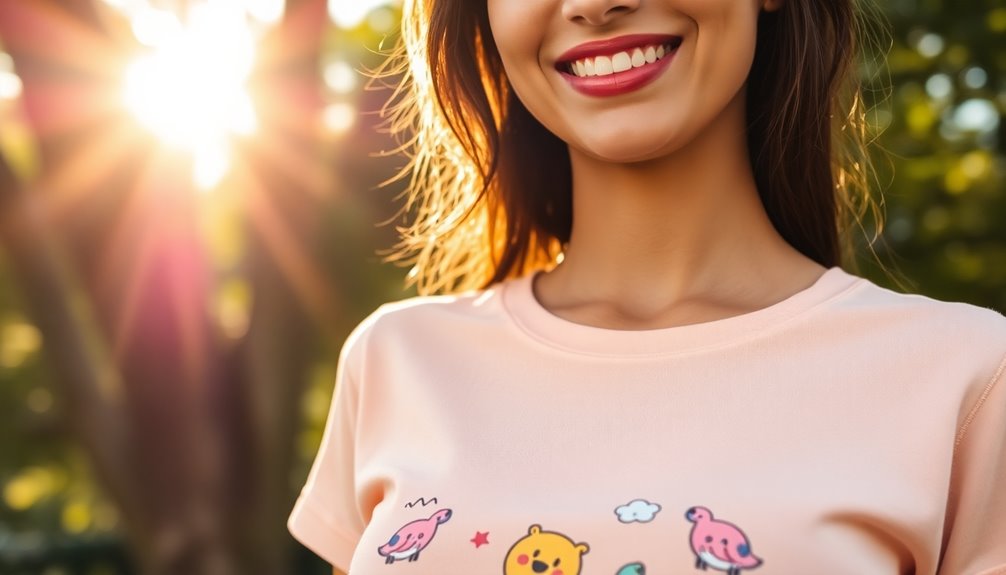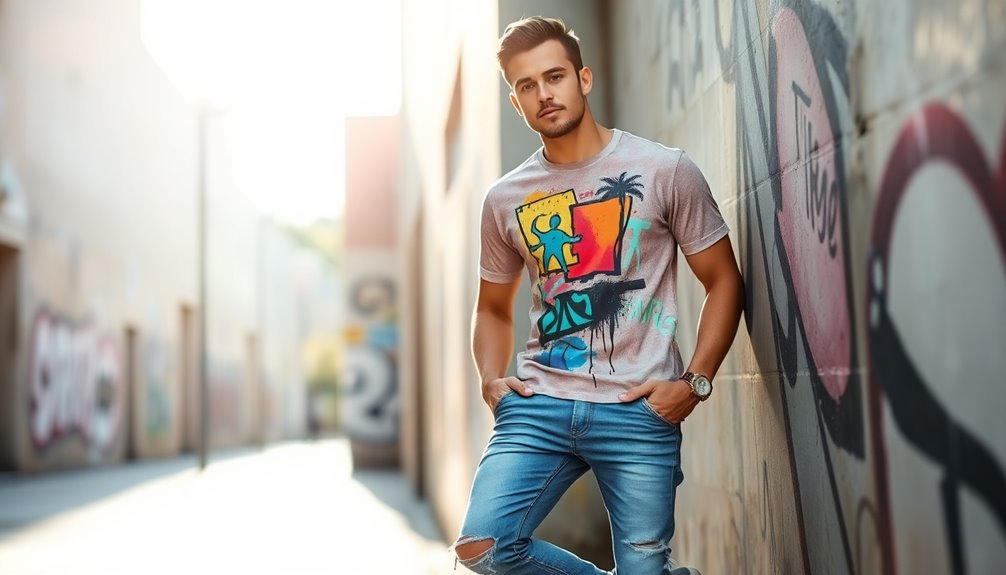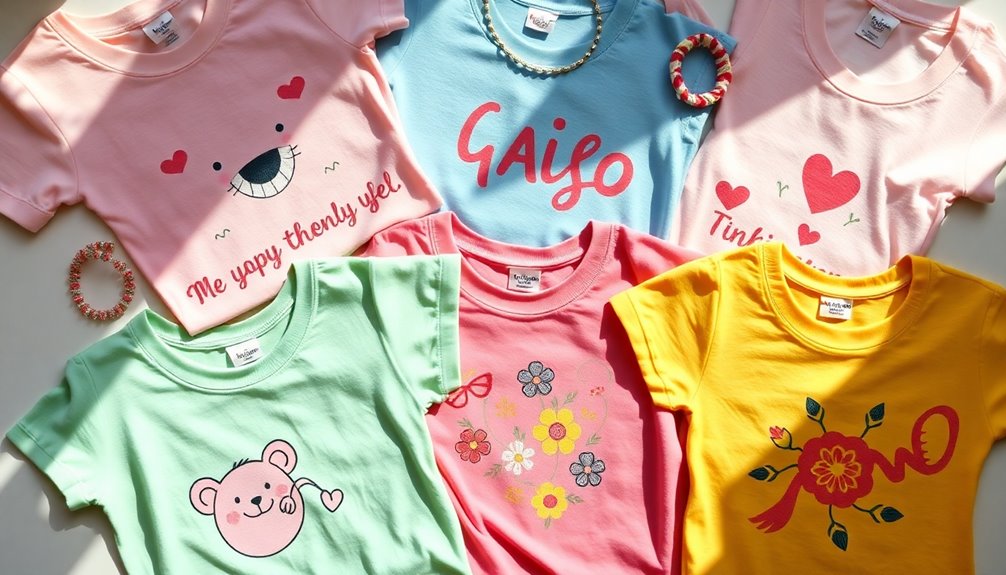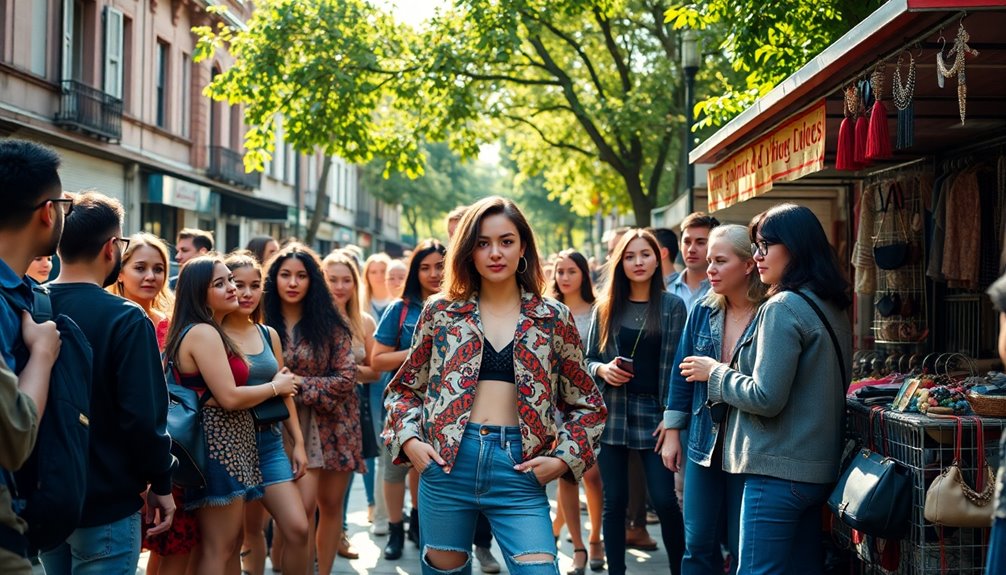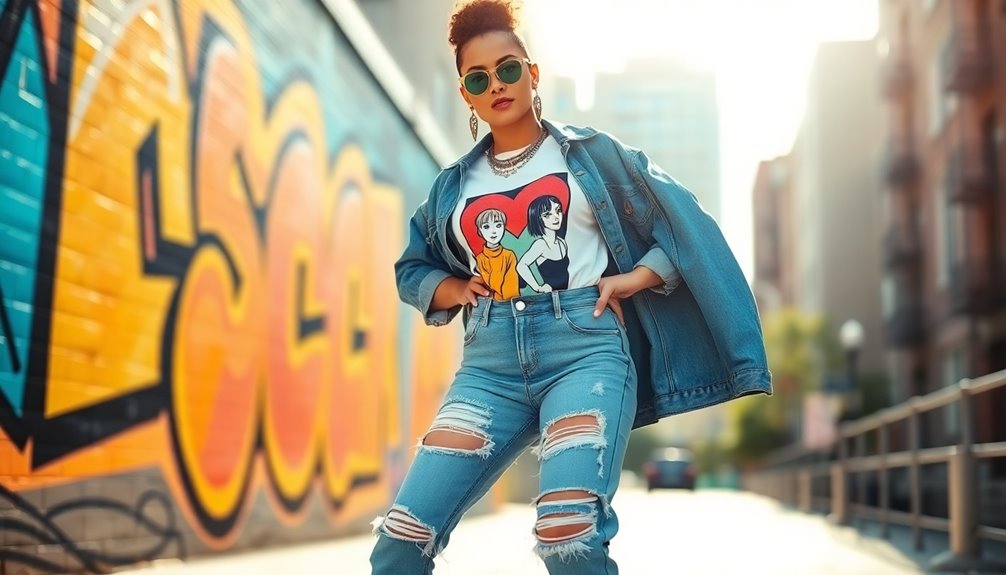Sustainable and ethical fashion brands are reshaping the industry by focusing on eco-friendly materials and fair labor practices. Brands like Patagonia and Stella McCartney lead the way, emphasizing transparency and environmental activism. You'll find options made from organic cotton and recycled polyester, helping reduce waste. Increasingly, consumers like you prefer sustainable choices, with many willing to pay more for ethical products. As the market grows, more brands are adopting circular fashion principles. To keep up with this shift and discover who's making a difference, you'll want to explore the emerging trends and innovative practices in sustainable fashion.
Overview of Sustainable Fashion
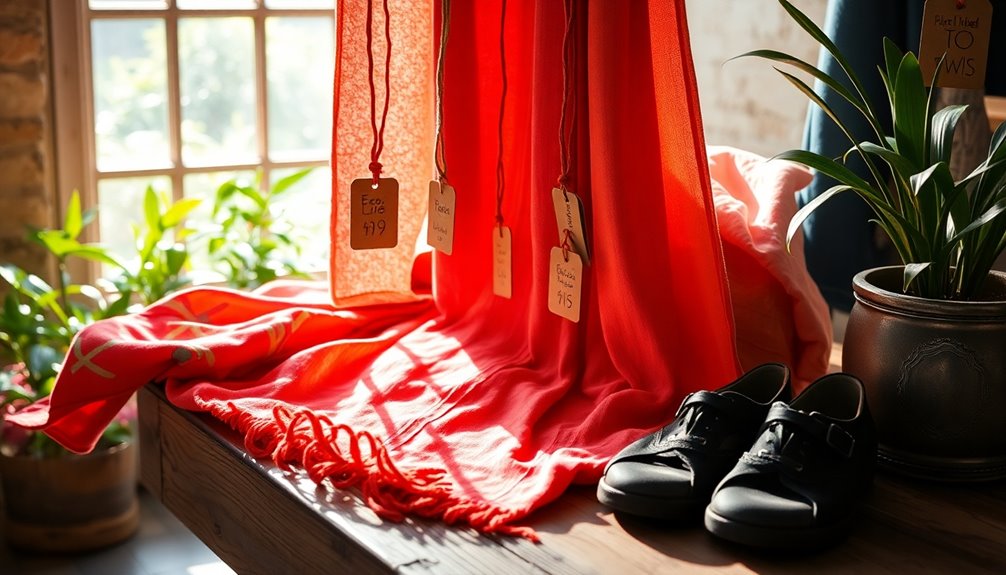
Sustainable fashion is more than just a trend; it's a movement reshaping the industry. As you explore sustainable fashion brands, you'll notice their commitment to ethical production and eco-friendly materials.
These brands prioritize organic fabrics that minimize environmental impact while promoting a sustainable wardrobe. By reducing waste through biodegradable and recyclable clothing, they tackle the pressing issue of fast fashion's detrimental effects.
Consumers are increasingly aware, with 70% now opting for eco-friendly options and 73% of millennials ready to pay more for sustainable choices. This shift highlights the importance of an ethical supply chain, ensuring that every step of production aligns with sustainability goals.
Embracing this movement not only benefits the planet but also empowers your fashion choices.
Key Players in Ethical Fashion
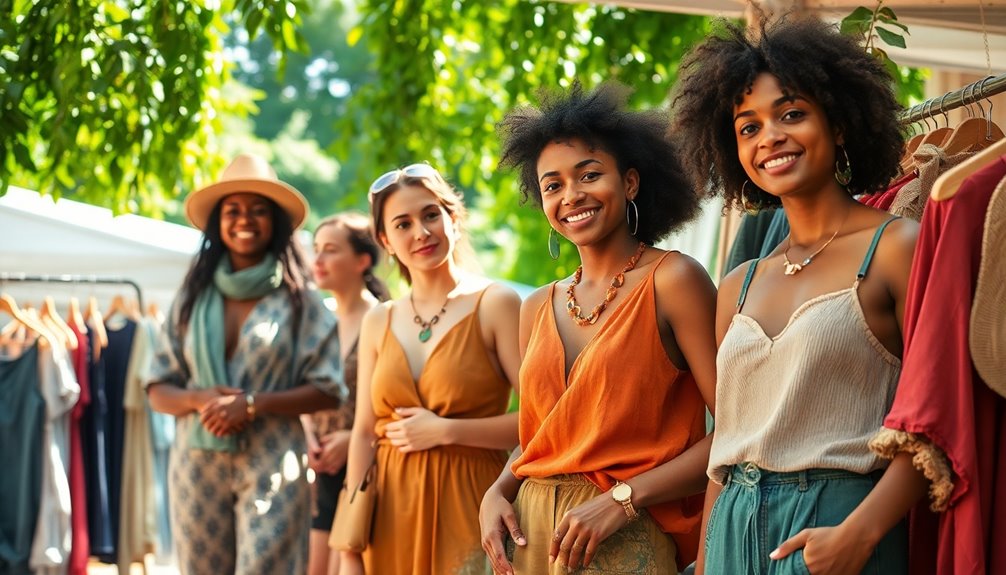
As you plunge into the world of ethical fashion, you'll encounter key players who are setting the standard for responsible practices.
Patagonia leads with its commitment to environmental activism, donating 1% of sales and promoting gear repair through its Worn Wear program.
Stella McCartney pioneers sustainable luxury, advocating against leather and fur while offering transparency via her Environmental Profit and Loss report.
Eileen Fisher champions responsible fashion with organic and recycled materials, encouraging customers to return old garments for upcycling.
Reformation merges trendy designs with eco-friendly practices, showcasing the environmental impact of its products through the RefScale tool.
Finally, People Tree excels in fair trade fashion, ensuring artisans receive fair wages while utilizing organic cotton and natural dyes.
Innovative Materials and Practices
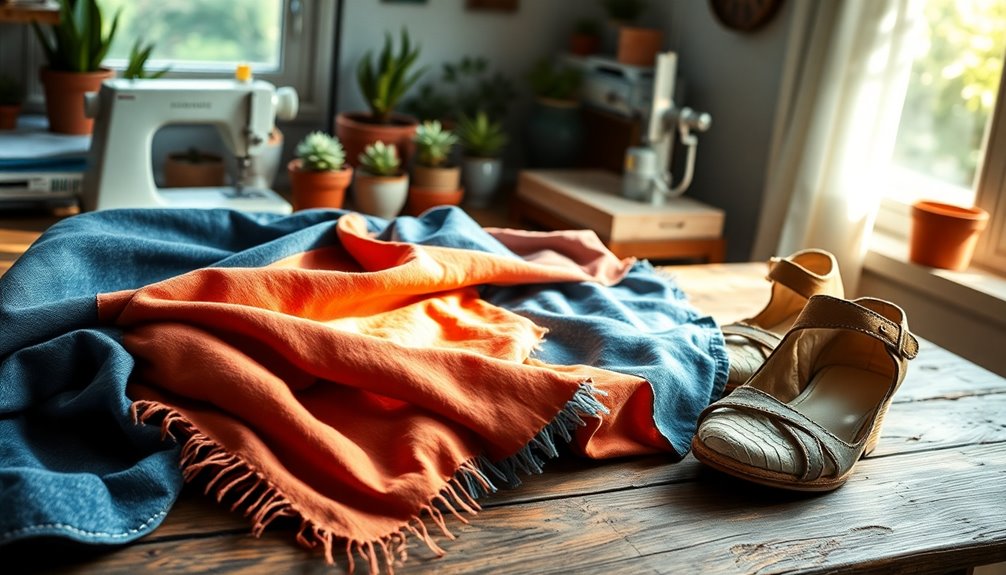
Innovative materials and practices are revolutionizing the fashion industry, making it easier for brands to reduce their environmental impact. Sustainable brands are increasingly using eco-friendly materials like organic cotton, recycled polyester, and Tencel. Companies such as E.L.V. Denim focus on upcycled materials, promoting circular fashion and reducing waste.
Here's a quick look at some key innovative practices:
| Innovative Practice | Description |
|---|---|
| Worn Wear Program | Patagonia's initiative for repair and recycle |
| Biodegradable Materials | Brands like Pact prioritize eco-friendly options |
| Upcycling | Repurposing waste into quality apparel |
| Circular Fashion Principles | Reformation emphasizes recycling and upcycling |
These approaches highlight sustainable production methods and ethical supply chains, making a significant difference in reducing landfill waste.
Commitment to Fair Labor
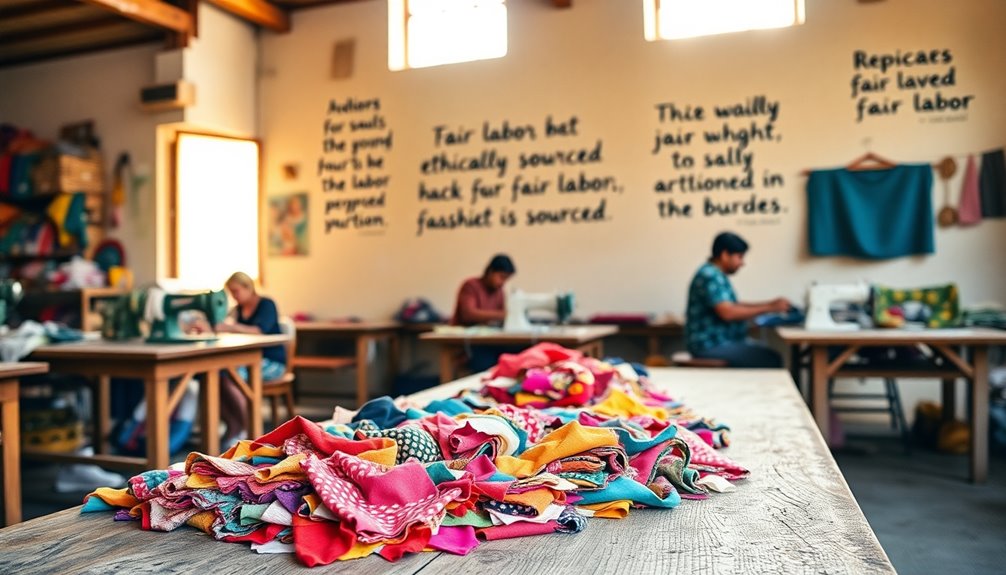
When you choose sustainable fashion brands, you're not just supporting stylish designs; you're also backing ethical sourcing practices that guarantee fair treatment for workers.
Many of these brands focus on living wage initiatives, helping artisans and laborers earn a fair income.
Ethical Sourcing Practices
Ethical sourcing practices are essential for creating a fair and sustainable fashion industry, ensuring that every material is sourced from producers who are compensated fairly.
Many sustainable fashion brands, like People Tree and Eileen Fisher, adhere to fair labor standards, promoting transparency in their production processes. Companies such as Outerknown prioritize eco-friendly practices and safe working conditions for all employees.
Additionally, brands like Ninety Percent showcase community support by donating 90% of their profits to producers and charitable causes. The Sustainable Apparel Coalition advocates for ethical sourcing, pushing for accountability across the industry.
As consumer demand for transparency grows, brands like Everlane adopt clear pricing models, revealing the cost breakdown of ethical sourcing and reinforcing their commitment to fair labor practices. This shift reflects a broader trend towards data-driven decision-making in the fashion industry, as companies seek to align their practices with consumer values and expectations.
Living Wage Initiatives
As the demand for sustainable fashion grows, many brands are stepping up their commitment to fair labor practices, ensuring workers earn a living wage that reflects the local cost of living.
Brands like People Tree and Eileen Fisher, both Fair Trade certified, guarantee safe working conditions and uphold workers' rights in their ethical supply chains.
Ninety Percent takes it further by donating 90% of profits to support the livelihoods of garment producers.
Companies such as Outerknown emphasize transparency, showing you exactly how much of your purchase goes toward fair wages.
The Sustainable Apparel Coalition also plays an essential role, encouraging sustainable brands to assess and enhance their labor practices, fostering an environment that prioritizes living wages and fair treatment for all.
Brands Leading the Movement
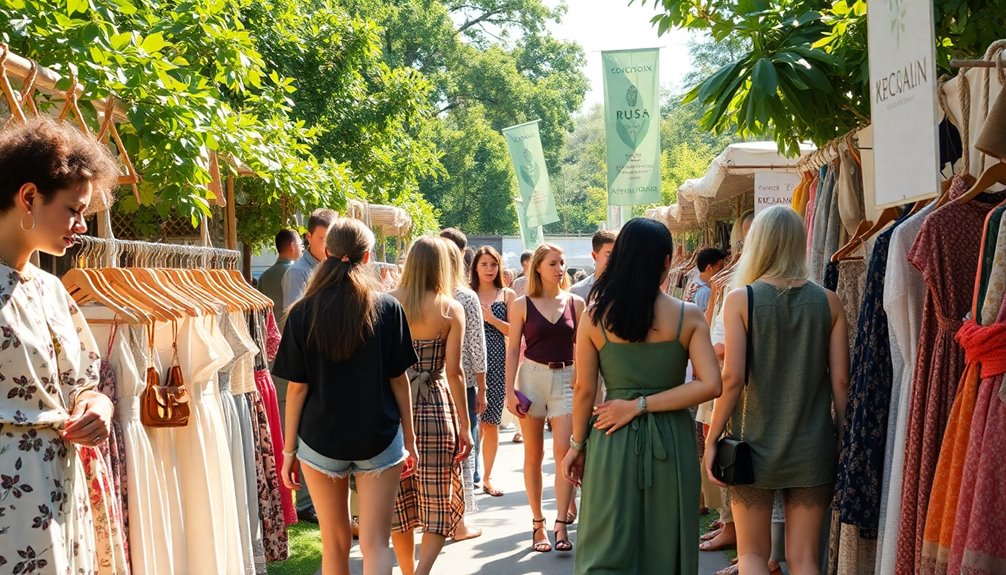
When you look at brands leading the sustainable fashion movement, you'll notice their innovative use of materials and commitment to ethical production practices.
They don't just focus on style; they also prioritize community impact initiatives that support social and environmental well-being.
These brands set a powerful example of how fashion can be both fashionable and responsible.
Innovative Material Usage
Innovative material usage is transforming the fashion industry, with several brands leading the charge toward sustainability.
Patagonia champions eco-friendly clothing by utilizing recycled and organic cotton, minimizing environmental impact through sustainable production methods.
Stella McCartney shuns leather entirely, opting for vegan alternatives like recycled polyester and regenerated cashmere, showcasing her commitment to innovative practices.
Eileen Fisher emphasizes organic fibers and recycled materials, promoting circular fashion with her Renew program for upcycling old pieces.
Reformation employs sustainable materials such as Tencel and recycled cotton, using a RefScale tool to highlight the environmental impact of its products.
Meanwhile, Allbirds specializes in eco-friendly footwear made from merino wool and eucalyptus, focusing on carbon neutrality and sustainable practices.
Ethical Production Practices
The shift towards sustainable materials in fashion goes hand in hand with a growing focus on ethical production practices. Sustainable brands like Patagonia and Eileen Fisher lead the way by prioritizing fair labor conditions and utilizing organic materials.
Reformation sets a benchmark with its transparent supply chain and eco-friendly production methods, even offering a carbon footprint calculator for each item. Meanwhile, People Tree has championed fair trade fashion since 1991, ensuring fair wages for artisans while using organic cotton.
Brands such as Ninety Percent exemplify a commitment to sustainable practices by donating 90% of profits to producers and charitable causes. Gabriela Hearst rounds out the movement by emphasizing luxury through collaborations with women artisans and deadstock materials, showcasing ethical production at its finest.
Community Impact Initiatives
While many fashion brands focus on sustainability, a growing number are also making a significant impact on communities through their initiatives.
These sustainable brands prioritize social responsibility and community welfare, ensuring their practices benefit both people and the planet.
Here are some examples of brands leading the movement:
- Ninety Percent donates 90% of profits to producers and charitable causes.
- TOMS follows a one-for-one model, giving shoes for every pair sold.
- People Tree collaborates with fair trade artisans, promoting fair labor practices.
- Amour Vert plants a tree for every t-shirt sold, aiding environmental restoration.
These companies are committed to ethical sourcing and transparency, creating a ripple effect of positive change in the communities they touch.
Impact of Consumer Demand
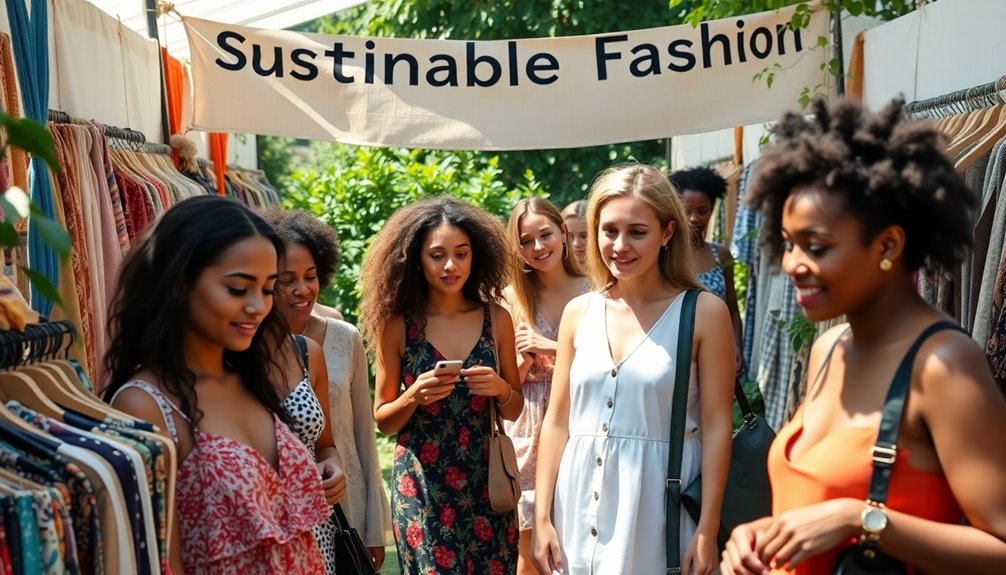
As consumers become more aware of sustainability issues, their demand for eco-friendly fashion brands has surged dramatically.
With 72% of shoppers prioritizing sustainable brands, it's clear that ethical consumption is reshaping the market. Millennials lead this trend, with 73% willing to pay a premium for sustainable options.
Meanwhile, Gen Z is making waves by actively purchasing used clothing to reduce their environmental footprint. This shift highlights a growing awareness of the impact on the environment associated with traditional fashion practices.
Approximately 55% of U.S. consumers are now on the lookout for eco-friendly brands, while 25% are ready to spend more on products aligning with their values.
Together, these trends signal a powerful movement towards sustainable fashion.
Challenges Facing Sustainable Fashion
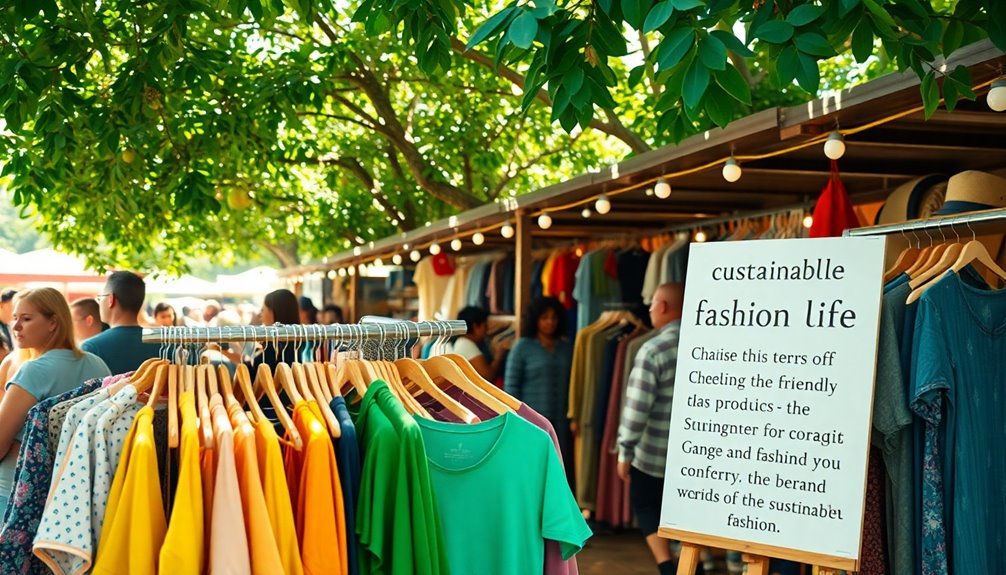
With the rise in consumer demand for sustainable fashion, brands now face a series of challenges that threaten their growth and impact.
These obstacles include:
- Complexity in sourcing sustainable materials, often limited and pricier than conventional options.
- Consumer misunderstanding of the fast fashion industry's environmental impact, hindering awareness of sustainable brands.
- Geopolitical issues disrupting supply chains, complicating ethical production practices.
- Lack of standardized certification for sustainable practices, leading to greenwashing concerns.
These factors create a tough landscape for brands aiming for transparency and trust.
Without clear communication of their sustainability stories, it's hard to build loyalty among consumers.
As you explore sustainable fashion, stay informed about these challenges to better support ethical brands.
Future Trends in Ethical Fashion
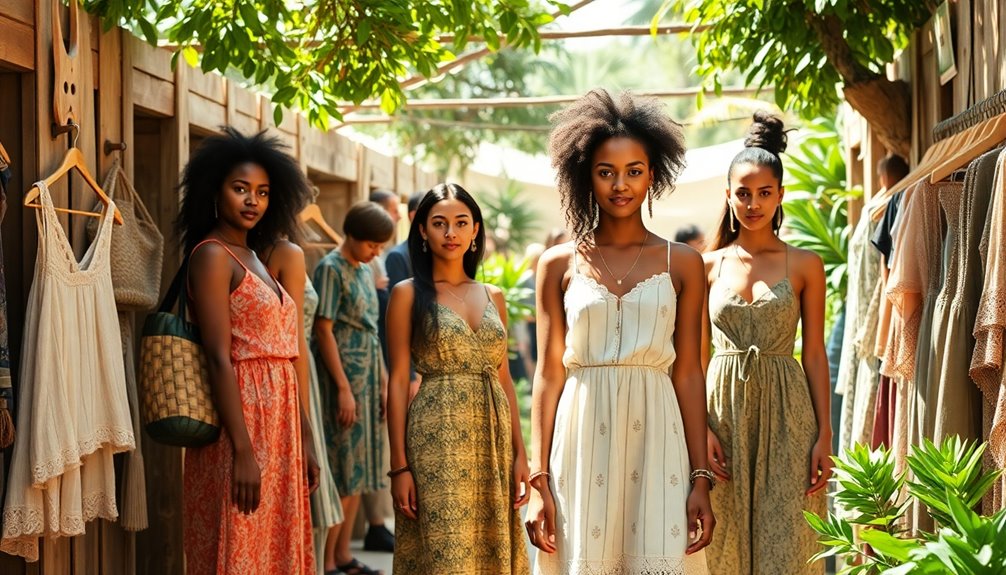
The future of ethical fashion is shaping up to be vibrant and transformative, fueled by a significant shift in consumer values and technological innovation.
As consumers increasingly prioritize sustainable fashion, the market is projected to grow at a CAGR of 8.1%, reaching over $11 billion by 2027.
With around 67% of consumers considering sustainability essential in their choices, it's clear that eco-friendly options are gaining traction.
Younger demographics, particularly 75% of Gen Z, are embracing ethical fashion through secondhand purchases to lessen their environmental impact.
Sustainable brands are also adopting innovative production practices like print on demand to minimize waste.
These future trends indicate a robust commitment to creating a more sustainable and responsible fashion industry.
How to Support Sustainable Brands
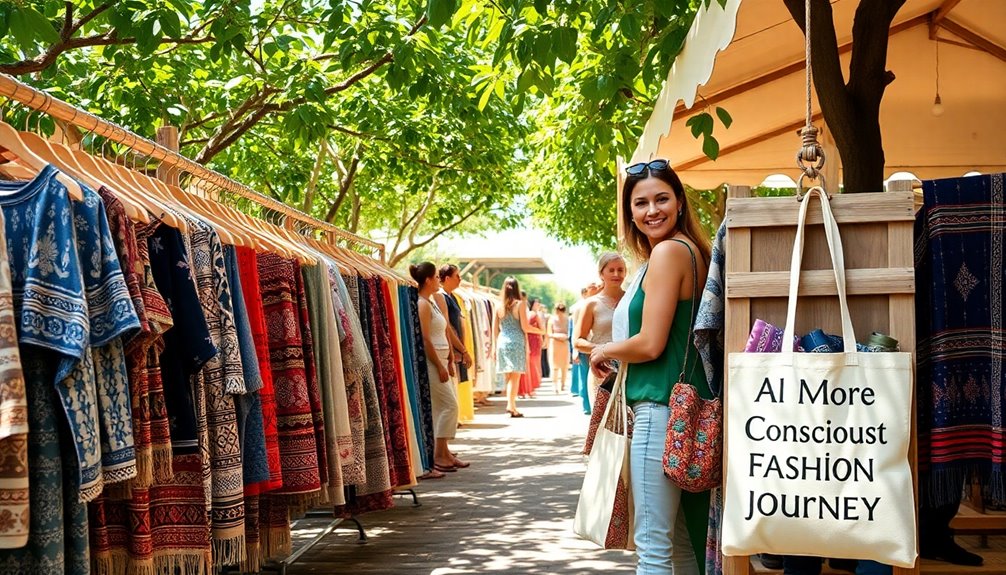
Supporting sustainable brands is essential for fostering a more ethical fashion industry, especially since your purchasing decisions can drive meaningful change.
When you choose to shop from these brands, you contribute to a positive impact on the environment and communities.
Here's how you can support sustainable brands:
- Opt for companies that use organic materials, like organic cotton or recycled polyester.
- Seek brands with transparent supply chains that prioritize fair labor practices.
- Look for those engaged in circular fashion initiatives, promoting recycling and upcycling.
- Consider B Corp certified brands, which meet high standards for social and environmental performance.
Frequently Asked Questions
What Fashion Brand Is the Most Sustainable?
When you're searching for the most sustainable fashion brand, it's hard to overlook Patagonia. Since 1973, it's championed eco-friendly practices and dedicates 1% of sales to environmental causes.
However, brands like Stella McCartney and Eileen Fisher also prioritize sustainability, with their focus on animal rights and recycling initiatives, respectively.
Don't forget about Reformation's transparency or Allbirds' commitment to natural materials. Each brand offers unique approaches to sustainability, making it a tough choice.
What Are Designers Currently Using to Be Sustainable in the Fashion Industry?
Did you know that over 92 million tons of textile waste end up in landfills each year?
Designers are tackling this issue by using eco-friendly materials like organic cotton and recycled polyester. They're also implementing circular fashion principles, encouraging you to return old clothes for resale or upcycling.
Plus, many brands focus on transparent supply chains to guarantee ethical practices, while biodegradable materials are becoming more common, promoting environmental stewardship in fashion.
What Is New in Sustainable Fashion?
In sustainable fashion, you'll notice exciting innovations like biodegradable materials and recycling practices gaining traction.
Brands are focusing on transparency, showcasing ethical supply chains and community contributions. You might find companies planting trees for each purchase, like tentree, which offsets carbon footprints effectively.
Plus, more brands are implementing circular fashion initiatives, encouraging you to recycle or return items.
With consumer awareness rising, it's clear that sustainability is becoming a priority in fashion.
Is H&M Now Ethical?
H&M's hustle toward ethical practices is happening, but it's a mixed bag.
While they've set bold goals like using 100% sustainable cotton by 2030, their fast fashion model still stirs skepticism.
You might appreciate their "H&M Conscious" collection, showcasing eco-friendly materials, but questions linger about overconsumption.
Their participation in sustainability initiatives shows promise, yet true ethical status is still up for debate.
Conclusion
As you journey through the vibrant landscape of sustainable fashion, think of each ethical brand as a tree in a flourishing forest. By choosing to support these brands, you water the roots of change, nurturing a future where style and conscience entwine. Remember, every conscious purchase you make is a seed planted, growing into a movement that champions the planet and its people. Together, let's cultivate a world where fashion blooms responsibly, leaving a legacy of hope for generations to come.

